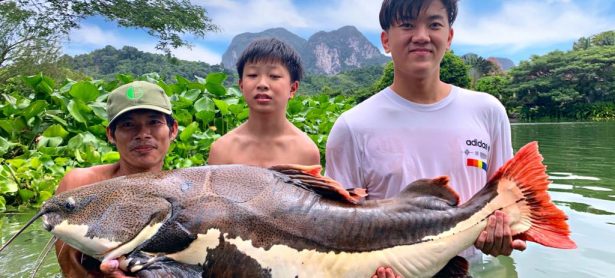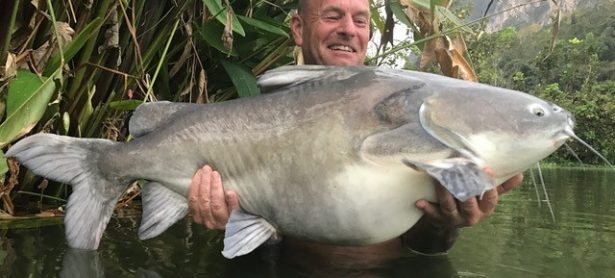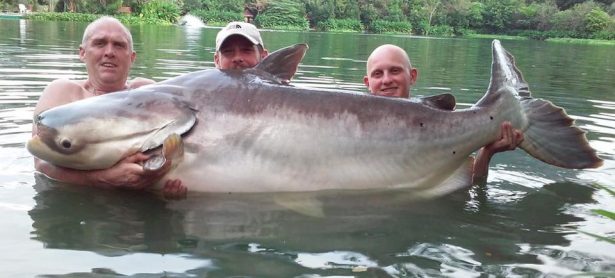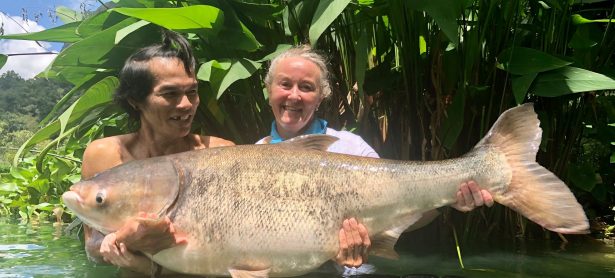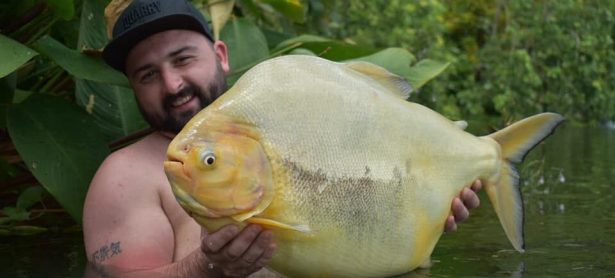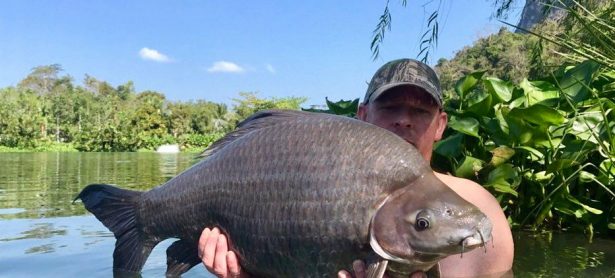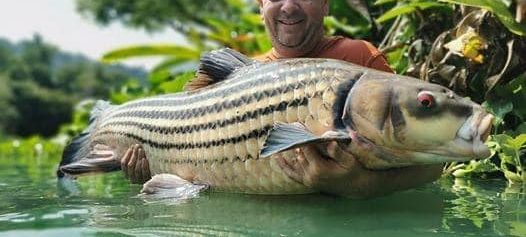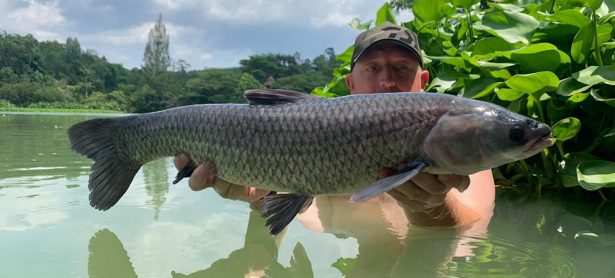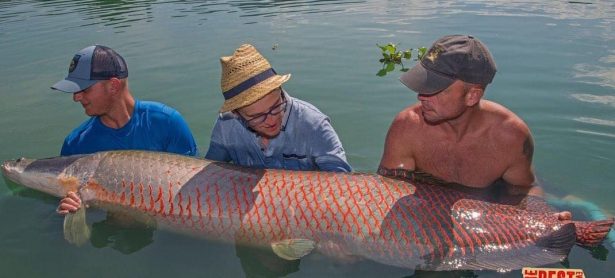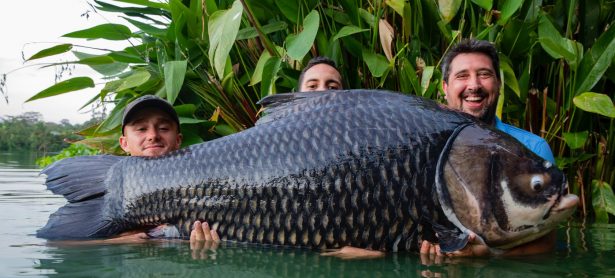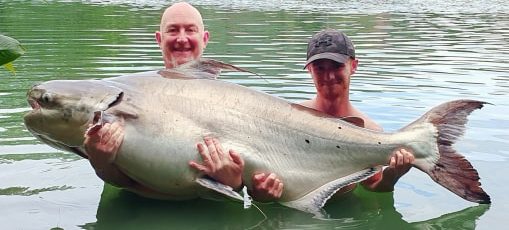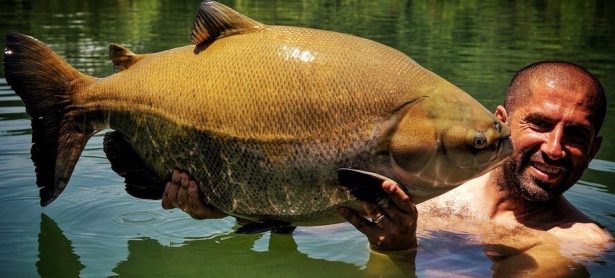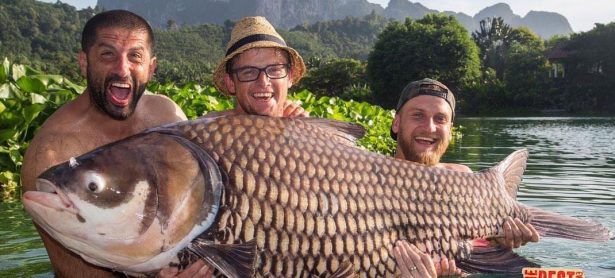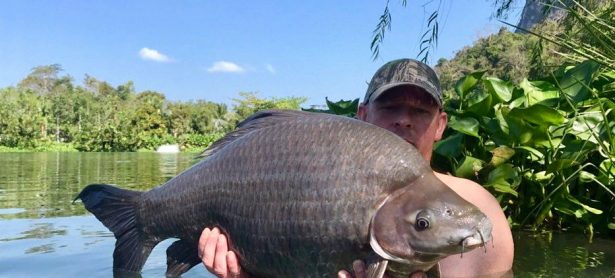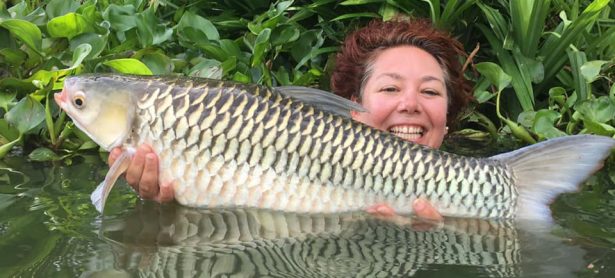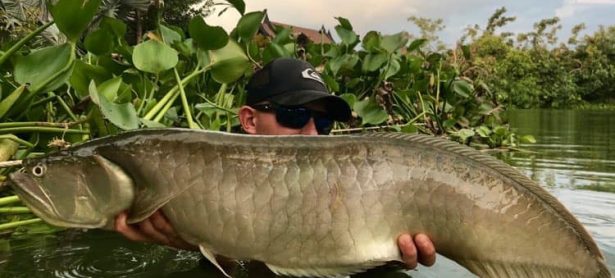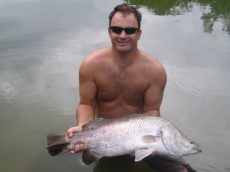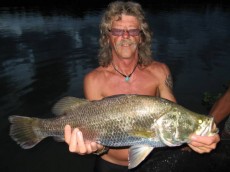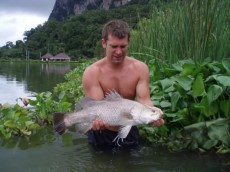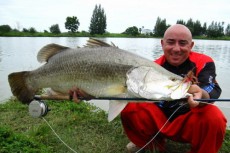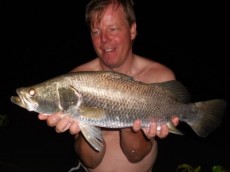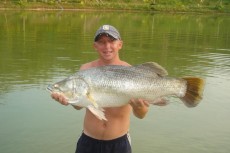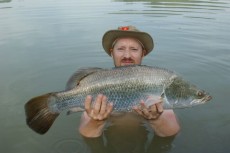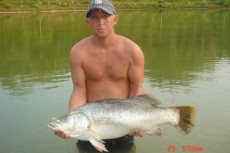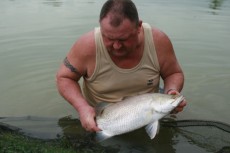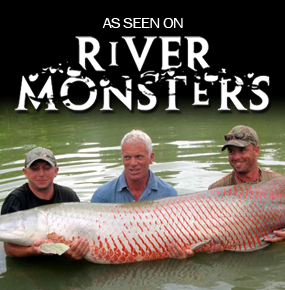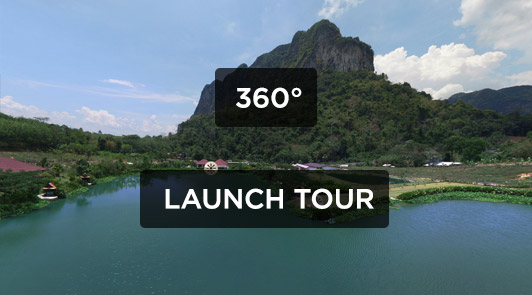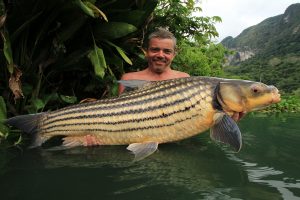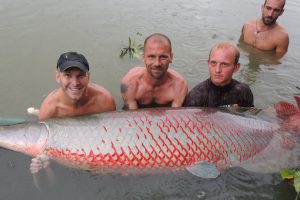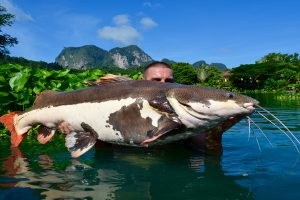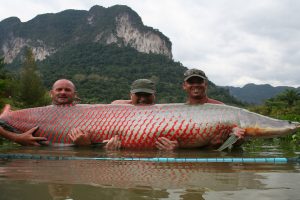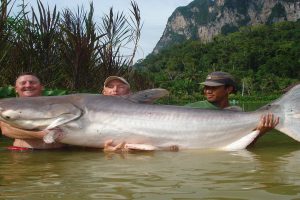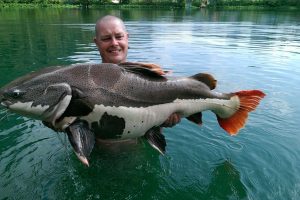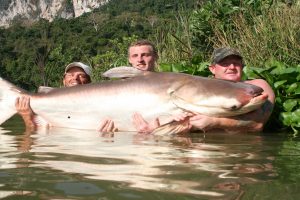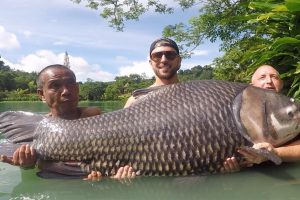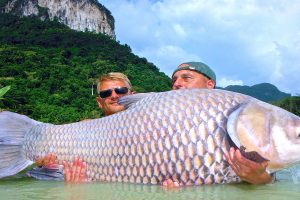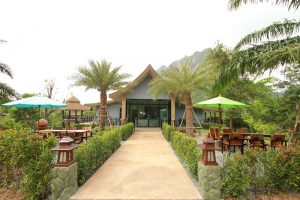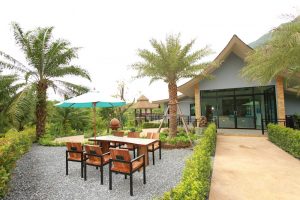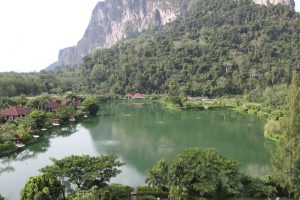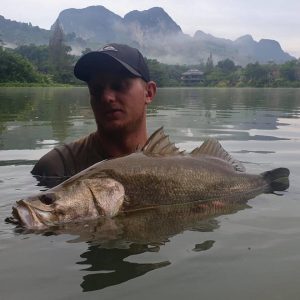 Name: Barramundi – Nile Perch Hybrid (snook, giant perch, white sea bass).
Name: Barramundi – Nile Perch Hybrid (snook, giant perch, white sea bass).
Species: Lates calcarifer.
Thai name: Pla kapong kao.
Max length: 1.2m.
Max weight: 45kg (90lb).
IGFA record: 37.85kg (83lbs).
Diet: Fish, frogs, waterfowl, shrimp, crustaceans and squid.
To fish for our Barramundi x Nile Perch Hybrids, we recommend bottom fishing with deadbaits. Barramundi Hybrids are also great fun on the fly, and any fish patterns fished on floating lines down the weeded margins will give you some heart stopping takes. When hooked barramundi put on a fine display of jumping and head shaking, so just keep in contact with the fish and do not slacken off the pressure or they will shake the hook clear. Once netted the fun is not over, as they will often leap clear of the net or use their razor sharp gill covers to break through the net. As with all our fish, photograph in the water, but mind those sharp gill plates and spiny top fins or you will be off down the hospital having some razor wounds stitched up. We suggest letting our guides help you to hold the head end as they are used to the danger when these fish shake their heads.
General facts on Barramundi x Nile Perch:
Barramundi and Nile Perch are not native to Thailand; they were originally bought here as a farmed fish for food, then the Thais recognized their popularity as a fine sporting fish. The barramundi is greenish bronze on their backs with silver flanks and a cream belly. Barramundi belong to the giant perch family; they have the perch characteristics of a pointed, spiked top fin, with razor edges to their gill plates. In the wild, barramundi move between fresh and salt water during various stages of their life cycle. Their eggs and fry can only survive in brackish or salt water, and in captivity they are converted to life in freshwater. They are carnivores, feeding mainly on smaller fish, crustaceans and shrimp.
Their large mouths enable them to take prey half their body size. When it’s quiet, listen for the distinct thwack noise echo round the lake when barramundi surface feed, especially last light. Wild barramundi inhabit rivers and migrate to the tidal estuaries and flats to spawn at the start of the monsoon season, and the migrating males meet up with the females, which lay millions of eggs. Barramundi are hermaphroditic; they are born males, but as they mature a percentage change to females, and most big barramundi are females. These fish will not spawn in our lake. The barramundi is recognized as a fine eating fish; they are farmed in many countries as an important food source from their native Australia to Malaysia, Thailand, most of Asia and recently in America the Netherlands and the UK. The Aquabella group in the UK produces eight tons of barramundi per year for distribution throughout Europe.



